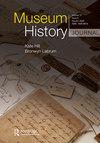Anatomy on trial: Itinerant anatomy museums in mid nineteenth-century England
IF 0.2
Q3 HISTORY
引用次数: 3
Abstract
ABSTRACT In the mid nineteenth century there were several travelling collections of anatomical waxworks in England. Their stated aim was to educate the public, especially women, about health, particularly reproductive health, to which end their proprietors gave demonstrations, sold pamphlets, and in some cases practised medicine. Most large population centres on the railway network played host to a museum and the total number of visitors is estimated at over a million. Despite a lack of complaints from the public, there was opposition from the magistrates which resulted in a series of prosecutions on charges of obscenity. Owing to their impermanence and their reputation as indecent exhibitions, these itinerant anatomy museums all but disappeared from cultural histories of nineteenth-century England. They were, however, sufficiently successful in engaging with audiences that they briefly challenged the monopoly that the medical profession — newly unified under the Medical Act — exercised over the study of anatomy.解剖试验:十九世纪中期英国的巡回解剖博物馆
19世纪中期,英国有几个巡回收藏的解剖蜡像。他们宣称的目的是教育公众,特别是妇女关于健康,特别是生殖健康的知识,为此目的,他们的老板举行示威,出售小册子,在某些情况下行医。铁路网上大多数人口密集的中心都设有博物馆,游客总数估计超过一百万。尽管公众没有投诉,但治安官反对,导致了一系列以淫秽罪起诉的案件。由于它们的无常和不雅展览的名声,这些流动的解剖学博物馆几乎从19世纪英国的文化历史中消失了。然而,他们在与观众接触方面取得了足够的成功,以至于他们短暂地挑战了医学界对解剖学研究的垄断——医学界在《医疗法案》下刚刚统一起来。
本文章由计算机程序翻译,如有差异,请以英文原文为准。
求助全文
约1分钟内获得全文
求助全文

 求助内容:
求助内容: 应助结果提醒方式:
应助结果提醒方式:


